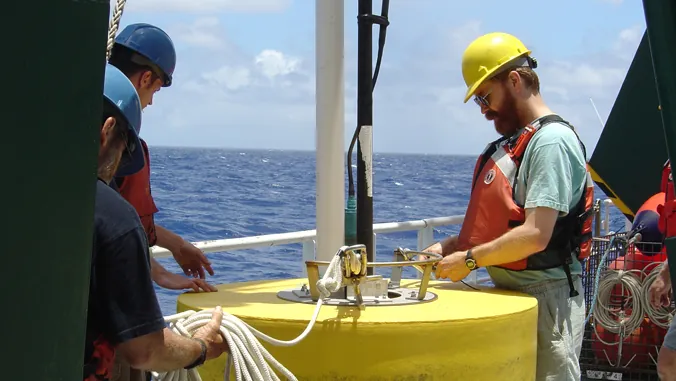
Can Ocean Iron Fertilization Be Our Climate Savior? Here’s What You Need to Know!
2024-10-09
Author: John Tan
Could adding iron to the world's oceans really be a game changer in the fight against climate change? An intriguing new article published in Frontiers in Climate by an international team of researchers—including experts from the University of Hawai‘i at Mānoa—shines a light on the potential of ocean iron fertilization (OIF) as a cost-effective and scalable solution for marine carbon dioxide removal (mCDR).
Despite the urgency to reduce greenhouse gas emissions, the scientific community recognizes the necessity of actively removing existing carbon dioxide (CO2) from our atmosphere. Researcher Angelicque White, a professor of oceanography at UH, emphasizes that while previous experiments with open ocean iron addition have shown mixed results, the risks of inaction are far greater. With Hawai‘i already grappling with challenges like rising sea levels, ocean acidification, and increasing ocean temperatures, it is crucial to explore all potential solutions.
What Exactly is Ocean Iron Fertilization?
Ocean iron fertilization is a technique that introduces tiny amounts of iron—an essential nutrient for marine life—into the surface of the ocean. This encourages the growth of phytoplankton, microscopic plants that play a vital role in sequestering CO2. As these organisms thrive and eventually die, they sink to the ocean floor, effectively locking away carbon for potentially thousands of years. Although iron naturally enters oceanic systems, OIF seeks to accelerate this natural process, which could help mitigate climate change.
Researcher Nick Hawco points out that much is still unknown about how adding iron to the ocean impacts marine ecosystems. Questions remain about how long the iron will persist in the water, the types of plankton it will promote, and the overall efficiency of carbon storage. Controlled ocean trials are essential to gather the necessary data to address these uncertainties.
The importance of OIF has not gone unnoticed. Endorsed by the Intergovernmental Panel on Climate Change and the National Academies of Sciences, Engineering, and Medicine, this innovative approach has garnered support from over 400 scientists advocating for further research into mCDR methods.
A Collaborative Effort for Ocean Solutions
Lead author Ken Buesseler, who directs the Exploring Ocean Iron Solutions program and is a senior scientist at the Woods Hole Oceanographic Institution, highlights the significance of this newfound scientific consensus. "For the first time in over a decade, the marine scientific community has come together to support a specific research initiative for ocean iron."
The study outlines five critical activities for advancing OIF research:
1. Conducting field studies in the northeastern Pacific Ocean.
2. Developing regional and global modeling simulations.
3. Experimenting with various iron forms and delivery methods to identify the best fit.
4. Enhancing monitoring, reporting, and verification (MRV) techniques for carbon capture, including ecological monitoring.
5. Promoting social science and governance frameworks to complement physical research efforts.
As the climate crisis looms larger, initiatives like ocean iron fertilization may provide the innovative solutions needed to buy us time in the battle against climate change. Could this remarkable natural process hold the key to preserving our planet for future generations? The stakes couldn't be higher—stay informed as this story unfolds!

 Brasil (PT)
Brasil (PT)
 Canada (EN)
Canada (EN)
 Chile (ES)
Chile (ES)
 España (ES)
España (ES)
 France (FR)
France (FR)
 Hong Kong (EN)
Hong Kong (EN)
 Italia (IT)
Italia (IT)
 日本 (JA)
日本 (JA)
 Magyarország (HU)
Magyarország (HU)
 Norge (NO)
Norge (NO)
 Polska (PL)
Polska (PL)
 Schweiz (DE)
Schweiz (DE)
 Singapore (EN)
Singapore (EN)
 Sverige (SV)
Sverige (SV)
 Suomi (FI)
Suomi (FI)
 Türkiye (TR)
Türkiye (TR)